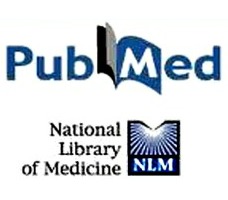2016 Jun 15. pii: S0889-1591(16)30189-1. doi: 10.1016/j.bbi.2016.06.010.
[Epub ahead of print]
Celorrio M1, Fernández-Suárez D1, Rojo-Bustamante E2, Echeverry-Alzate V3, Ramírez MJ4, Hillard CJ3, López-Moreno JA5, Maldonado R6, Oyarzábal J7, Franco R8, Aymerich MS9.
Abstract
 Elements of the endocannabinoid system are strongly expressed in the basal ganglia where they suffer profound rearrangements after dopamine depletion. Modulation of the levels of the endocannabinoid 2-arachidonoyl glycerol by inhibiting monoacylglycerol lipase alters glial phenotypes and provides neuroprotection in a mouse model of Parkinson’s disease. In this study, we assessed whether inhibiting fatty acid amide hydrolase could also provide beneficial effects on the time course of this disease. The fatty acid amide hydrolase inhibitor, URB597, was administered chronically to mice treated with probenecid and 1-methyl-4-phenyl-1,2,3,6-tetrahydropyridine (MPTPp) over 5 weeks. URB597 (1 mg/kg) prevented MPTPp induced motor impairment but it did not preserve the dopamine levels in the nigrostriatal pathway or regulate glial cell activation. The symptomatic relief of URB597 was confirmed in haloperidol-induced catalepsy assays, where its anti-cataleptic effects were both blocked by antagonists of the two cannabinoid receptors (CB1 and CB2), and abolished in animals deficient in these receptors. Other fatty acid amide hydrolase inhibitors, JNJ1661010 and TCF2, also had anti-cataleptic properties. Together, these results demonstrate an effect of fatty acid amide hydrolase inhibition on the motor symptoms of Parkinson’s disease in two distinct experimental models that is mediated by cannabinoid receptors.
Elements of the endocannabinoid system are strongly expressed in the basal ganglia where they suffer profound rearrangements after dopamine depletion. Modulation of the levels of the endocannabinoid 2-arachidonoyl glycerol by inhibiting monoacylglycerol lipase alters glial phenotypes and provides neuroprotection in a mouse model of Parkinson’s disease. In this study, we assessed whether inhibiting fatty acid amide hydrolase could also provide beneficial effects on the time course of this disease. The fatty acid amide hydrolase inhibitor, URB597, was administered chronically to mice treated with probenecid and 1-methyl-4-phenyl-1,2,3,6-tetrahydropyridine (MPTPp) over 5 weeks. URB597 (1 mg/kg) prevented MPTPp induced motor impairment but it did not preserve the dopamine levels in the nigrostriatal pathway or regulate glial cell activation. The symptomatic relief of URB597 was confirmed in haloperidol-induced catalepsy assays, where its anti-cataleptic effects were both blocked by antagonists of the two cannabinoid receptors (CB1 and CB2), and abolished in animals deficient in these receptors. Other fatty acid amide hydrolase inhibitors, JNJ1661010 and TCF2, also had anti-cataleptic properties. Together, these results demonstrate an effect of fatty acid amide hydrolase inhibition on the motor symptoms of Parkinson’s disease in two distinct experimental models that is mediated by cannabinoid receptors.Copyright © 2016 Elsevier Inc. All rights reserved.
KEYWORDS:
CB(1) receptor; CB(2) receptor; FAAH; Parkinson’s disease; URB597; endocannabinoid system
- PMID: 27318096
- [PubMed – as supplied by publisher]

